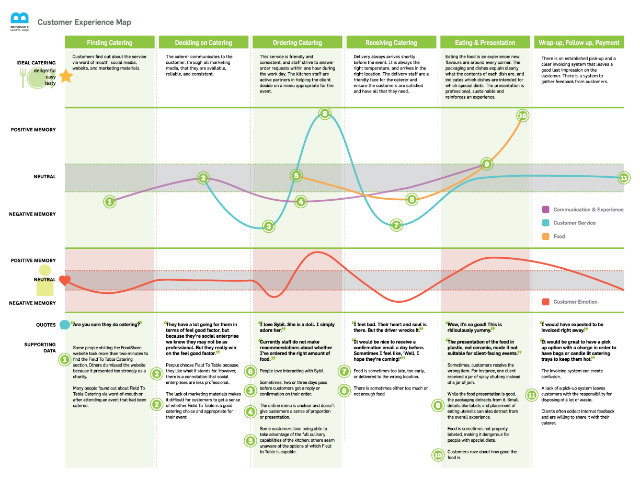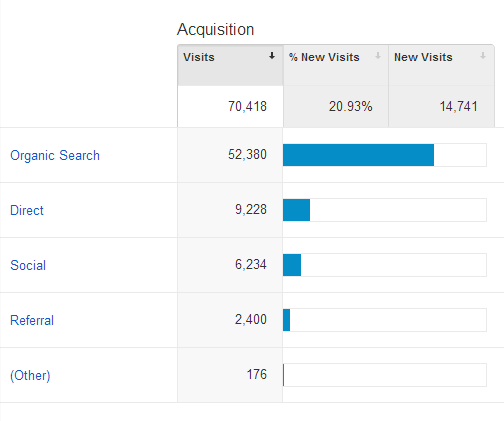Let’s have a closer look at the next Conversion Rate Optimization Maturity Model‘s pillar: Activities. We’ve already described People and Knowledge, which are the main inputs for this pillar.
The ultimate goal of Conversion Rate Optimization activities is to improve the bottom line. Optimizing means understanding your website issues and deciding what actions you should to take to fix them.
The typical outputs of the activities are insights which you’re able to apply to your site and improve the conversion. As with the other pillars, there are no shortcuts. You can’t be doing advanced stuff without first learning the basics.
I suggest paying attention to the quality and frequency of your activities. Start out small, and gradually add more when you see that they have a significant impact and you earn your first wins. This usually doesn’t go unnoticed by management, which could eventually enable you to add more resources and allocate an extra budget to expand your conversion activities.
Below you can find my list of CRO activities, both basic and advanced. Recall the original model to identify your current position and learn more about the activities which you’d like to add to your daily schedule.
Let’s split them into two groups: qualitative and quantitative.
Qualitative Activities
Below I discuss five different qualitative activities I recommend.
1. Usability Testing
This is my favorite activity. Watching people interact with your website (software, app etc.) often provides great insight. It’s also very affordable – usually just few bucks. My impression is that although usability testing belongs to well-known activities, people generally don’t do it often enough (including myself, sadly). They also tend to start with usability testing at a later stage of the project when changes require more time and money.
I suggest doing it informally, both testing and report. Invite a few people, prepare your main use cases, and just watch them. Take a lot of notes, do a debriefing with your team, and iterate.
2. Customer Surveys
Surveys are another brilliant activity. By asking the right questions to the right people at the right moment you’re able to get valuable insights. Why do they sign-in or out from your service? Why did they choose you in the first place? Why did they abandon the checkout process? I am sure you would like to know these things and more.
I recently attended a great webinar by Conversion Rate Experts which focused on knowing how to ask the right questions. They suggested focusing on the customers who just bought from you. These “hot leads” can be easily identified and can tell you a lot of interesting things about your customers. A couple of good questions you can start with are:
- What persuaded you to purchase from us?
- Which alternatives did you consider before choosing [product name]?
- What’s the one thing that could have stopped you buying from us?
The whole webinar has just been published on their blog. I recommend checking it out if you want to learn more about surveys.
3. Heatmaps
There are various tools on the market which allow you to track visitors’ clicks. They are usually easy to implement and relatively inexpensive. All you need to do is add a small script to a desired page and you can immediately start collecting data. The output is called a heatmap of the clicks, and you can then easily see – in a visual form – what elements are getting the most attention on your page(s).
Also very handy are insights as to what your customers think is clickable, but in fact is not. Most of the heatmap tools also contain scrolling maps, which enables you to see how far down people scroll on a single page. A really useful feature for long pages.
Advanced tip: Segment your heat map results. Monitor where your paid search traffic clicks in comparison to the organic traffic. Check where the buyers click vs. the non-buyers, etc.
Here is an example of a typical heatmap:

4. LiveRecords
Have you tried heatmaps, yet strive for more insights? Record entire sessions of your site visitors! There are tools on the market which allow you to track nearly every move of a user, and see how they’re using your site. Of course, you’re not allowed to see things like credit card information and other confidential data, but you’re able to remotely watch real visitors in real-time while they use your website.
To avoid being overwhelmed by thousands of hours of recordings, segmentation is a must in this case. Achieve that by filtering out the paths you’re not interested in, instead focus on the areas and customers who can provide the most valuable insights.
5. Experience Mapping
If you are you looking for a comprehensive user experience technique to chart a customer experience with your website or product, experience mapping is a great option. It consists of two essential parts. The first is getting an overview of all experience touch points where your customers interacts with you product (website). The second part is getting both qualitative and quantitative research data regarding those points. Ask yourself, “What are the positive and negative issues that our customers experience at every single touch point?” A thorough overview of such research data represents an extraordinary fountain of insights.
To learn more about experience mapping I recommend visiting a dedicated microsite by Adaptive Path.
Here is an example of what an experience map might look like:

Quantitative Activities
Below I discuss four (or seven, depends on how you count it) different quantitative activities I recommend.
1. Google Analytics ABC (Acquisition, Behavior, Conversions)
Google Analytics recently changed its interface and identified three main groups of metrics. They cover the key areas of what you should be interested in, so I would recommend following their pattern.
Acquisition Analyses
The first group is Acquisition: it is about how people get to your website – your main traffic sources. What is the share of new and return visitors? What campaigns delivered the most effective traffic? Analyze those reports using multiple metrics, for example: bounce rate, conversion rate, average order value, and newsletter sign-up rate.

You may find that the best converting visits come from price comparison websites. But you might also find out that those customers often don’t buy from you a second time. On the other hand, your loyal newsletter prospects may convert at a lower rate, but in the long term they bring you more sales by way of repetitive purchases and a higher Average Order Value (AOV).
Behavior Analyses
The second one, Behavior Analyses, is all about what your users do on your website. Where do they land on your website, what content do they consume, and what are the common exit pages. By focusing on that area, you’re able to determine the most frequent customer paths through your website, and where they might encounter obstacles.

I strongly suggest using custom events often to mark important micro-conversions like a newsletter sign-up, research download or a product video has been seen.
If your target is a large e-commerce website and the site search tool is used often by your customers, dive deep into its usage and how it affects conversion.
Conversion Analyses
The last group focuses on conversions and conversion funnels. By using these reports you’re able to determine where you’re losing the majority of your prospects, and dig into the reasons behind it (useful activities to find out the reasons could be usability testing or customer surveys).

Look at the conversion funnels for your main products. You may discover useful insights, such as a recent drop in conversions pertaining only to a certain product funnel. Find out what products your customers often buy together and use that data for cross-sell offers. Get your hands dirty with overall product performance. For example, find out what the best-selling products are for each country/region and use this data to help formulate your marketing strategies.
2. Segmentation
Segmentation has been previously mentioned and most of you probably actively use it. At a certain maturity level you need to slice and dice your data and look at it across various dimensions. It can reveal some astounding insights to you.
There are many cases where you can use segments: first & return visitors, cart abandonments, geo segments, loyal customers etc.) Every good analytics tool has some predefined segments with the possibility to create your own. For example, Universal Analytics allows you create some powerful custom dimensions, and Kristoffer Olofsson has described a few advanced use cases of customer segmentation.
3. A/B testing
Online testing is an essential activity which we will dedicate a separated article to in the CRO Maturity Model series later, but in fact it is just the icing on the cake. It is a method used to verify your hypotheses, and should be based on your previously gained insights in order to have a high chance of success.
A/B (or MVT) testing needs to follow certain principles, which we will describe later, in order to work properly. However, the most important thing to keep in mind is that research precedes testing.
4. Personalization
One of the more advanced CRO techniques is personalization. The Internet gives us vast data possibilities, and personalization takes advantage of that and allows us to personalize content for key customer segments. The most successful e-commerce companies realize this and enjoy the benefits of such content (especially when looking at their bottom line figures).
You should track which content your customers usually consume and surprise them in their next visit with some small personalized details – their favorite product on the homepage, recently viewed categories, a welcome back offer, etc. Provide personalized emails with targeted content, too. You’re much more likely to be rewarded with higher click-through and conversion rates.
Advanced tip: Automated Behavioral Targeting
When you feel ready to move beyond normal personalization, go ahead and dive into the world of Automated Behavioral Targeting. Give every single customer the best converting content based on their past experiences and algorithms.
In order to pull this off successfully you will need a repository of various content, large amounts of data, and some advanced tools. It also requires a self-learning mechanism running in the background which always serves the best content to a visitor. However, the benefit will be presenting every customer with the best converting variation of multiple elements based on the real time performance.
That’s all from my side for now. With some additional research and effort I am sure you can add even more effective CRO activities. Feel free to share your favorite ones in the comments section below!








